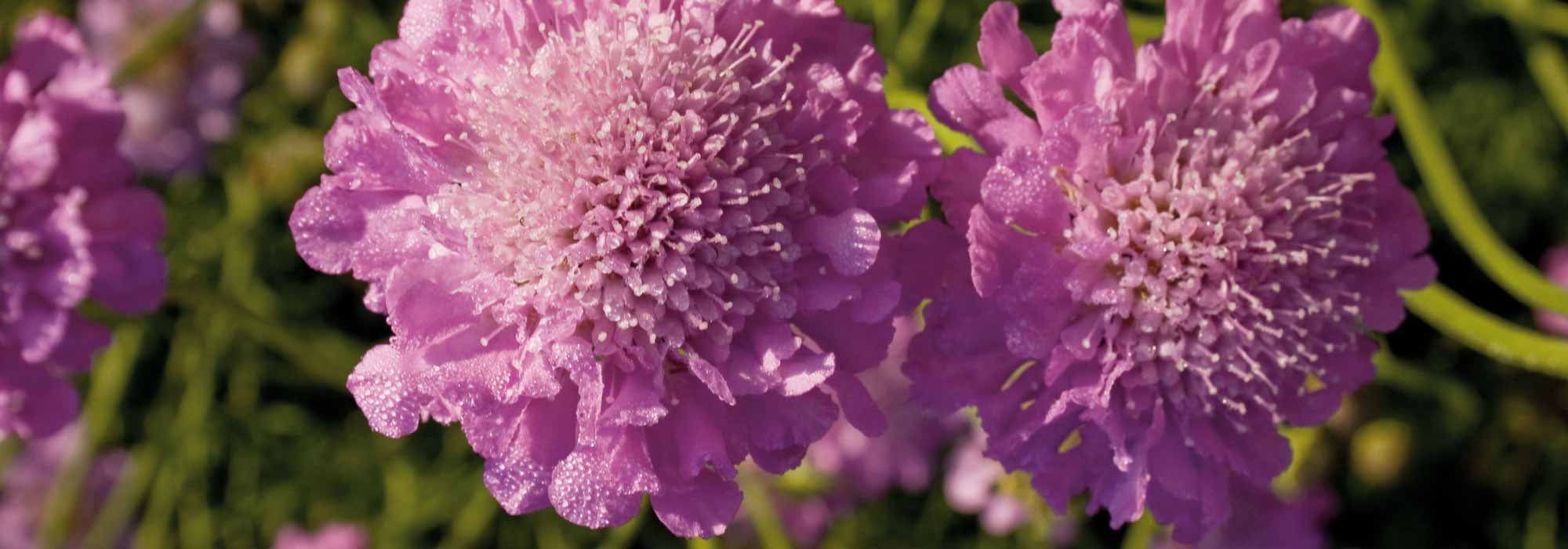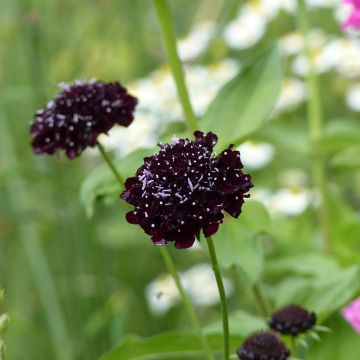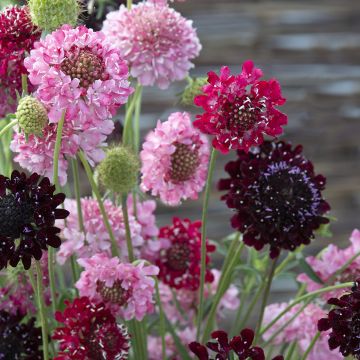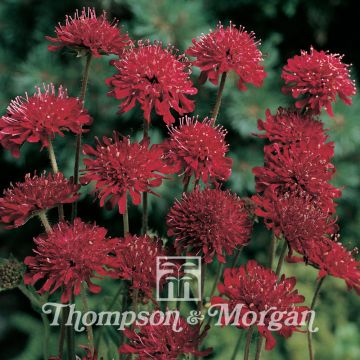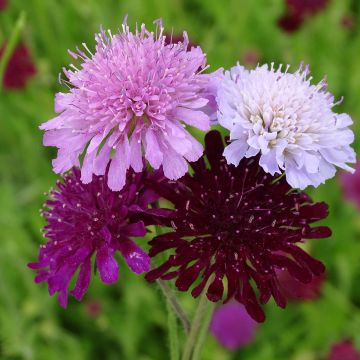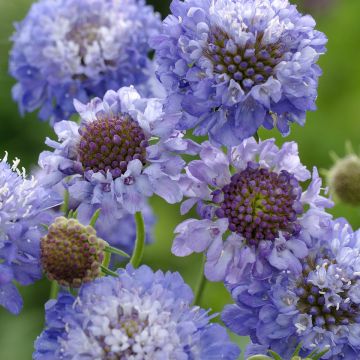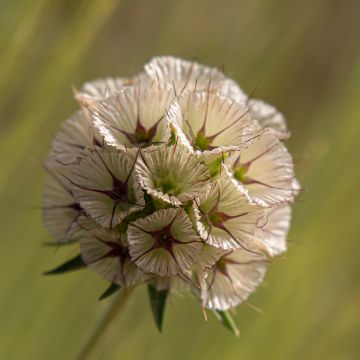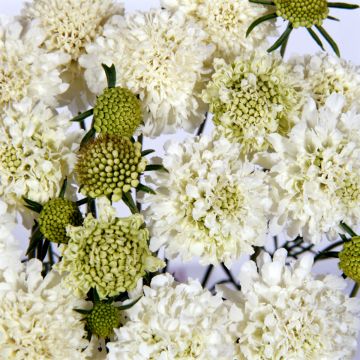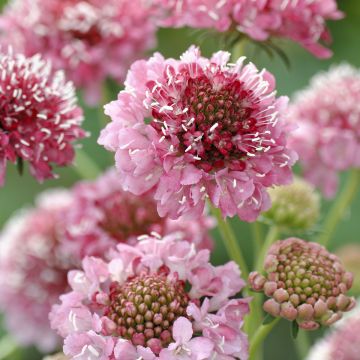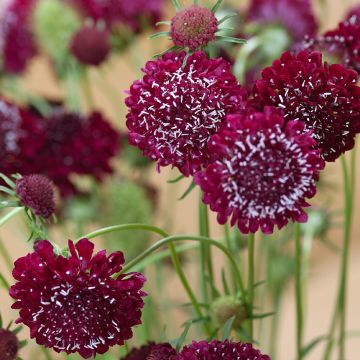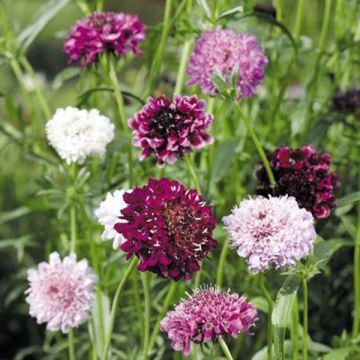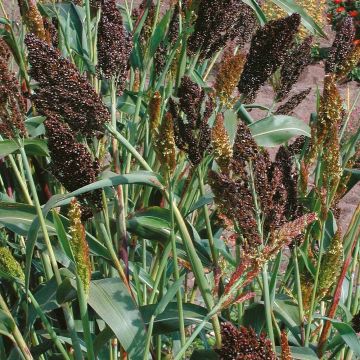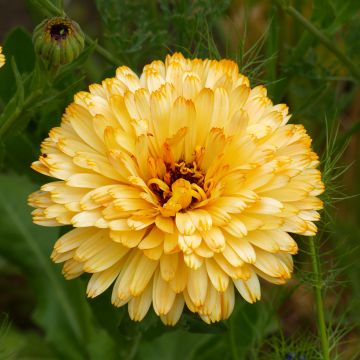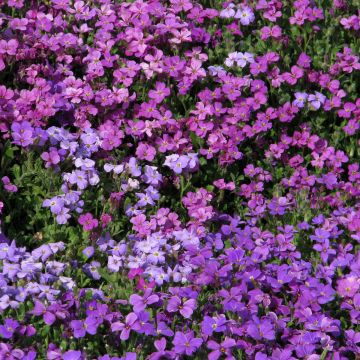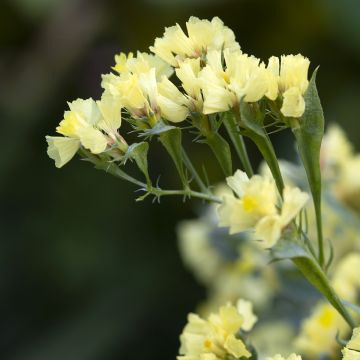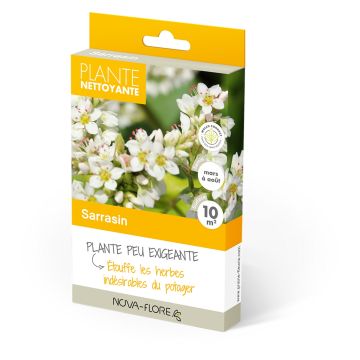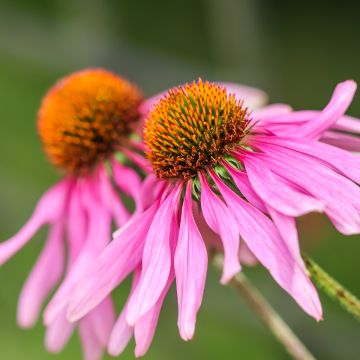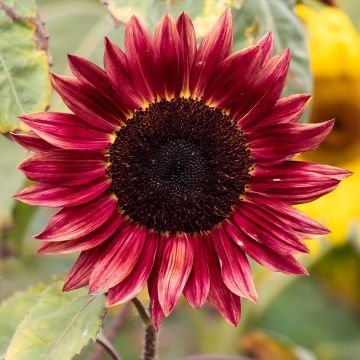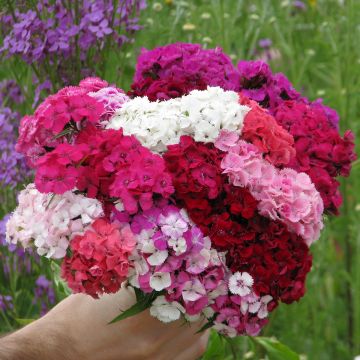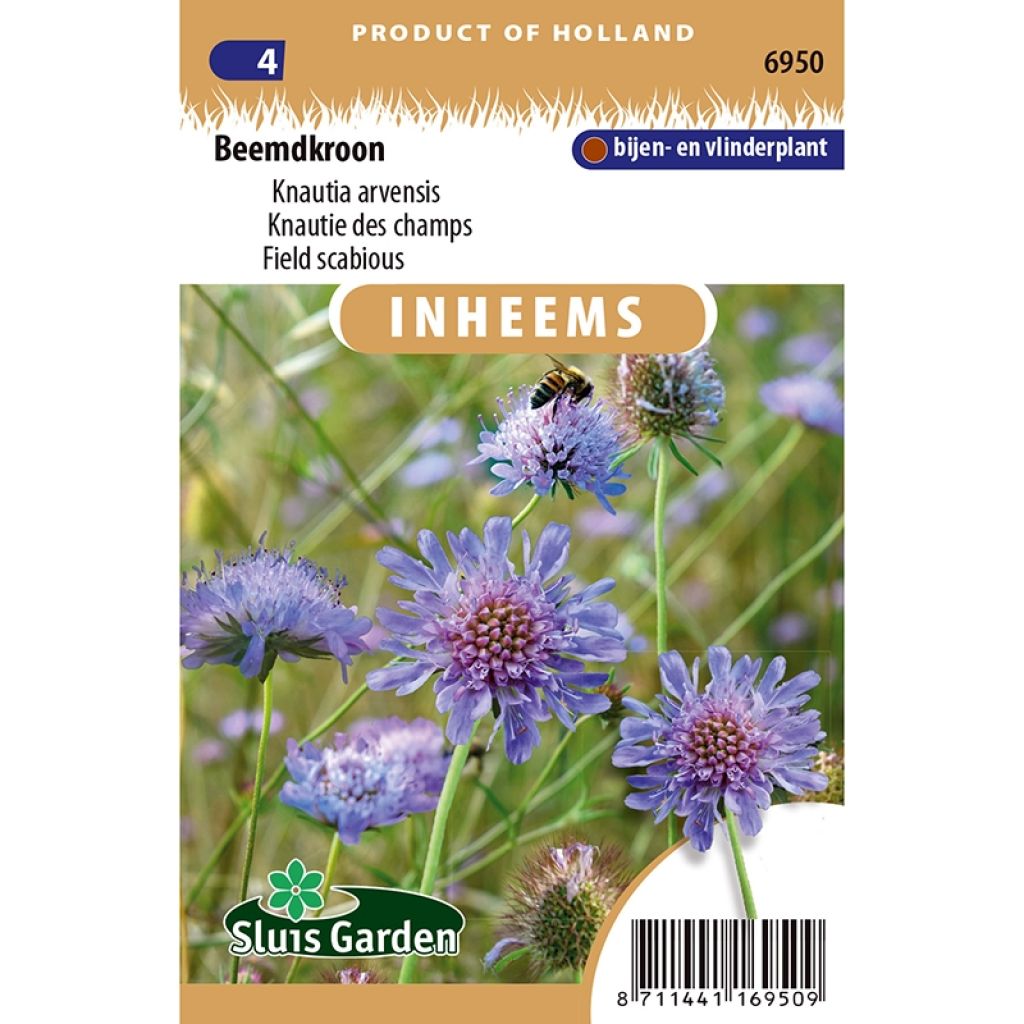

Graines de Knautie des champs - Knautia arvensis
Knautia arvensis
Knautia arvensis
Field Scabious
Special offer!
Receive a €20 voucher for any order over €90 (excluding delivery costs, credit notes, and plastic-free options)!
1- Add your favorite plants to your cart.
2- Once you have reached €90, confirm your order (you can even choose the delivery date!).
3- As soon as your order is shipped, you will receive an email containing your voucher code, valid for 3 months (90 days).
Your voucher is unique and can only be used once, for any order with a minimum value of €20, excluding delivery costs.
Can be combined with other current offers, non-divisible and non-refundable.
Home or relay delivery (depending on size and destination)
Schedule delivery date,
and select date in basket
This plant carries a 6 months recovery warranty
More information
We guarantee the quality of our plants for a full growing cycle, and will replace at our expense any plant that fails to recover under normal climatic and planting conditions.
Does this plant fit my garden?
Set up your Plantfit profile →
Description
Knautia arvensis, also known as the Field knautia or Field scabious, produces head-like flowers that resemble fluffy balls of light lilac-blue colour. It is a tall perennial with a slightly loose habit, but a light appearance, with stems emerging from a basal rosette of greyish-green leaves. It quickly establishes itself in the garden and readily self-seeds, although not excessively. Simple and hardy, loved by bees and butterflies, it has the charm and robustness of wild plants. Perfect in a flowery meadow, in a rustic flower bed, in full sun or partial shade, it shows good resistance to drought once established.
Knautia arvensis belongs to the family of honeysuckles or teasels according to the old classification. This plant is native to Europe, the Mediterranean, and the Caucasus. It has naturalized in certain regions of North America. In the wild, it often grows on limestone soils, in meadows or at the edge of woodlands. When in flower, it forms an erect clump, with a slightly loose habit, reaching a height of 80cm (32in), at least, with a diameter of 40cm (16in). This perennial forms a basal rosette of hairy, deeply lobed leaves, greyish-green in colour, evergreen in winter, lyre-shaped, from which numerous flexible, highly branched flowering stems emerge. The flowering period is from June to September-October, depending on the climate. An established plant produces around a hundred flower heads each summer. The stems are adorned with a few simple, pinnatifid leaves and bear spherical heads of small pale blue-purple flowers, with a diameter of 2 to 4cm (1 to 2in). The flowering is followed by the formation of very decorative seed heads. Like all scabious, it is a bee-friendly and nectar-rich plant. It is a short-lived perennial, but it readily self-seeds in light soil.
In a flowery meadow, in beds of perennials with more sophisticated flowers, or in herbaceous borders, the Field Scabious enhances all other plants, with its small flowers that seem to be suspended in the air. Its slightly gangly habit necessitates growing this plant among others, more upright, which will provide support. It will benefit from being planted at the back of a border, leaning against shrubs such as Abelias, Kolwitzia amabilis 'Pink Cloud', Deutzias... For example, associate it with hybrid mulleins, 'Canon Went' toadflax, medium-sized perennial grasses (Stipa, Eragrostis, small Miscanthus...). Another idea for an association: with Aster turbinellus or Coreopsis 'Moonbeam'. Its delicate flowers are well-suited for the composition of country-style bouquets.
Flowering
Foliage
Plant habit
Botanical data
Knautia
arvensis
Caprifoliacées (Dipsacaceae)
Field Scabious
Northern Europe
Other Scabiosa seeds
View all →Planting and care
Sow field scabious seeds directly in place, in April-May or September-October, in well-prepared, well-cultivated soil free of weeds.
You can also sow in a tray from late winter, at a depth of 1.5mm (0.1in), in a special seed compost, under cover. Make sure the compost is moist but not waterlogged and enclose the sowings in a polyethylene bag until germination, which takes 10 to 30 days at 21-24°C (69.8-75.2°F). Transplant the young plants when they are large enough to handle, into 8cm (3in) pots. Then plant them out a little later, spacing them 40cm (16in) apart.
Culture: Scabious thrives in sunny positions, in fairly light and rich soil. It prefers neutral to alkaline soils. Regular watering, but not excessive, will speed up its growth. Regularly removing faded flowers will promote a long flowering period. This plant self-seeds quite easily in light soil, without taking over the whole garden.
Knautias are tolerant and can withstand temporary drought. In humus-rich and fertile soil, it may be useful to discreetly stake the clumps to prevent them from collapsing. This precaution is unnecessary in poorer and drier soil, where its development will be more limited.
Sowing period
Intended location
Planting & care advice
This item has not been reviewed yet - be the first to leave a review about it.
Similar products
Haven't found what you were looking for?
Hardiness is the lowest winter temperature a plant can endure without suffering serious damage or even dying. However, hardiness is affected by location (a sheltered area, such as a patio), protection (winter cover) and soil type (hardiness is improved by well-drained soil).

Photo Sharing Terms & Conditions
In order to encourage gardeners to interact and share their experiences, Promesse de fleurs offers various media enabling content to be uploaded onto its Site - in particular via the ‘Photo sharing’ module.
The User agrees to refrain from:
- Posting any content that is illegal, prejudicial, insulting, racist, inciteful to hatred, revisionist, contrary to public decency, that infringes on privacy or on the privacy rights of third parties, in particular the publicity rights of persons and goods, intellectual property rights, or the right to privacy.
- Submitting content on behalf of a third party;
- Impersonate the identity of a third party and/or publish any personal information about a third party;
In general, the User undertakes to refrain from any unethical behaviour.
All Content (in particular text, comments, files, images, photos, videos, creative works, etc.), which may be subject to property or intellectual property rights, image or other private rights, shall remain the property of the User, subject to the limited rights granted by the terms of the licence granted by Promesse de fleurs as stated below. Users are at liberty to publish or not to publish such Content on the Site, notably via the ‘Photo Sharing’ facility, and accept that this Content shall be made public and freely accessible, notably on the Internet.
Users further acknowledge, undertake to have ,and guarantee that they hold all necessary rights and permissions to publish such material on the Site, in particular with regard to the legislation in force pertaining to any privacy, property, intellectual property, image, or contractual rights, or rights of any other nature. By publishing such Content on the Site, Users acknowledge accepting full liability as publishers of the Content within the meaning of the law, and grant Promesse de fleurs, free of charge, an inclusive, worldwide licence for the said Content for the entire duration of its publication, including all reproduction, representation, up/downloading, displaying, performing, transmission, and storage rights.
Users also grant permission for their name to be linked to the Content and accept that this link may not always be made available.
By engaging in posting material, Users consent to their Content becoming automatically accessible on the Internet, in particular on other sites and/or blogs and/or web pages of the Promesse de fleurs site, including in particular social pages and the Promesse de fleurs catalogue.
Users may secure the removal of entrusted content free of charge by issuing a simple request via our contact form.
The flowering period indicated on our website applies to countries and regions located in USDA zone 8 (France, the United Kingdom, Ireland, the Netherlands, etc.)
It will vary according to where you live:
- In zones 9 to 10 (Italy, Spain, Greece, etc.), flowering will occur about 2 to 4 weeks earlier.
- In zones 6 to 7 (Germany, Poland, Slovenia, and lower mountainous regions), flowering will be delayed by 2 to 3 weeks.
- In zone 5 (Central Europe, Scandinavia), blooming will be delayed by 3 to 5 weeks.
In temperate climates, pruning of spring-flowering shrubs (forsythia, spireas, etc.) should be done just after flowering.
Pruning of summer-flowering shrubs (Indian Lilac, Perovskia, etc.) can be done in winter or spring.
In cold regions as well as with frost-sensitive plants, avoid pruning too early when severe frosts may still occur.
The planting period indicated on our website applies to countries and regions located in USDA zone 8 (France, United Kingdom, Ireland, Netherlands).
It will vary according to where you live:
- In Mediterranean zones (Marseille, Madrid, Milan, etc.), autumn and winter are the best planting periods.
- In continental zones (Strasbourg, Munich, Vienna, etc.), delay planting by 2 to 3 weeks in spring and bring it forward by 2 to 4 weeks in autumn.
- In mountainous regions (the Alps, Pyrenees, Carpathians, etc.), it is best to plant in late spring (May-June) or late summer (August-September).
The harvesting period indicated on our website applies to countries and regions in USDA zone 8 (France, England, Ireland, the Netherlands).
In colder areas (Scandinavia, Poland, Austria...) fruit and vegetable harvests are likely to be delayed by 3-4 weeks.
In warmer areas (Italy, Spain, Greece, etc.), harvesting will probably take place earlier, depending on weather conditions.
The sowing periods indicated on our website apply to countries and regions within USDA Zone 8 (France, UK, Ireland, Netherlands).
In colder areas (Scandinavia, Poland, Austria...), delay any outdoor sowing by 3-4 weeks, or sow under glass.
In warmer climes (Italy, Spain, Greece, etc.), bring outdoor sowing forward by a few weeks.






























